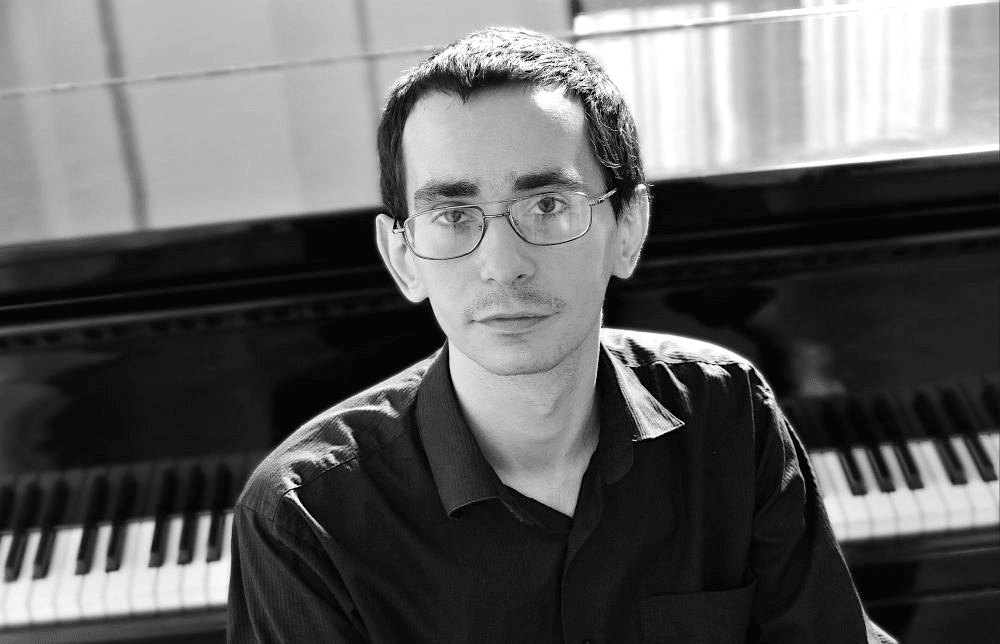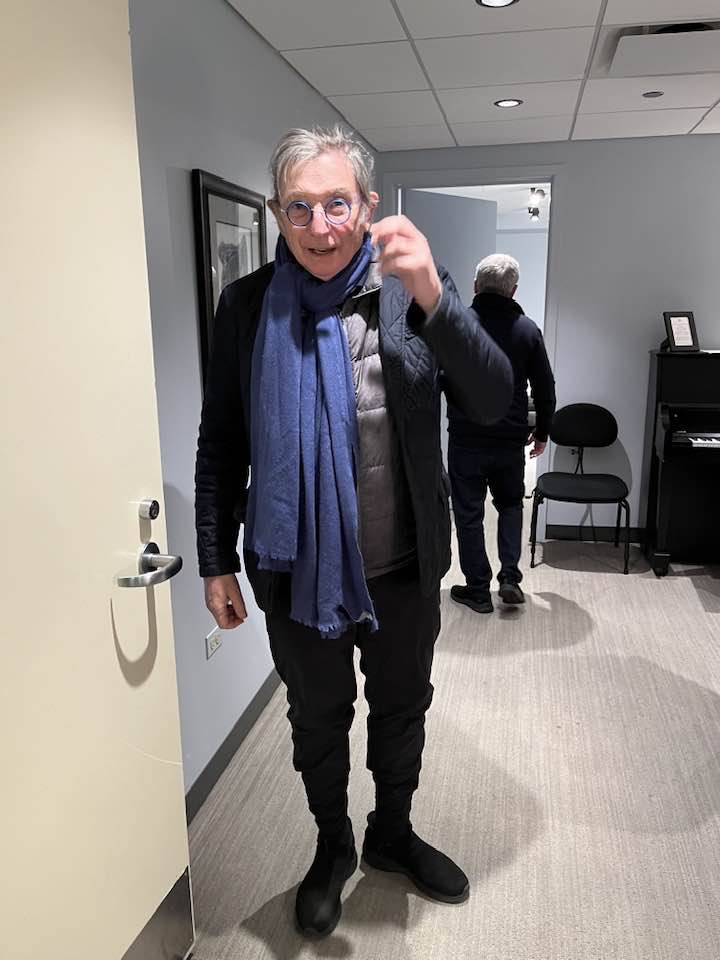Have you seen the great Chopin Polonaise mash?
main16 pianists tackle the opus 53. Fascinating.
Especially Gilels and Paderewski. And some of the wrong ‘uns.

16 pianists tackle the opus 53. Fascinating.
Especially Gilels and Paderewski. And some of the wrong ‘uns.

We hear that Stephen Rose, former head of…

There have been some irreparable losses. Germany mourned…

The steady departure of cherished professors at the…

The prolific international conductor Michael Tilson Thomas, diagnosed…

Session expired
Please log in again. The login page will open in a new tab. After logging in you can close it and return to this page.
No joy like that of Lisitsa!
Well that was brilliant! So much fun watching and listening. And Liberace?
I surely agree viz. Gilels and Paderewski and was astonished at how much of the great Pole’s tone came thru’ from a film dating from the year of my birth! Of the others, I was impressed even more than I had expected by G. Cziffra in his 1961 performance. Again, great tonal beauty as well as main-stream phrasing, I thought! This was great fun!!
Great editing! Horowitz is enchanting.
That was beautfiul and fun. I especially liked Horowitz.
Liberace!
Although there is nothing but “audio,” listeners might want to check out Earl Wild’s performance of Op. 53 on YouTube. Fast enough actually to be a dance, And he can play ALL the notes. And it’s really clean, clear, and tremendously exciting. EW was the great but unheralded American virtuoso of his (or any other) time.
I agree completely!
Why ” unheralded”? Certainly not by those of us who know at least a little bit about last century piano playing.
I was astonished that Earl Wild did not have a much more internationally-based career. I remember a long article by Harold Schoenberg in the NYT at the start of the 1980s bemoaning the loss of the great virtuoso pianists. There remained, he claimed, only three – Horowitz, Cherkassky and Wild. Fortunately Wild made regular visits to Asia and I heard amazing performances of several concerti including Rach 2 (he himself had seen Rachmaninov perform it in Pittsburg when he was resident pianist there in his mid-teens) and one of the finest Chopin/Liszt recitals I have ever had the joy to attend.
Wild was a big bear of a man with a shock of white hair. He had none of the mannerisms or affectations of a Lang Lang; he merely sat at the piano and got down to work. And what work! He was also one of the funniest men on the concert circuit, full of hilarious stories about his colleagues. Many are included in his long but wonderfully insightful biography “A Walk on the Wild Side”.
That was really interesting. Wonderful opportunity to see some of the great names of the past and to compare – maybe I know a bit more about piano playing than I thought.
Astonishing! Great edition work. Why is not a credit for the editor, or editors?
Thanks!
When I was not watching the screen for the names of players, I could hear a definite change in the style of playing hen Martha Argerich came on. I love her playing.
Paderewski for me . . .
Same approach could be used for parallel adventures in countless musical performances vocal and instrumental … just suggesting…
This video is “in Deutschland leider nicht verfügbar” because it “could” contain music from Sony.
Move to Österreich! No problem here in Wien.
For a moment thought Austin Powers was the fellow at 2:10.
Great video. Lot of good and careful work went into putting it together.
Dear “Artsjournal” – it is a great honor to be included
in your “Great Polonaise mash” – thank you very much !
However – I am sure that any musician or careful listener will immediately notice
an obvious technical problem in the fragment taken from my archive recording (1971)
This fragment is not maintained in the proper key A flat major – but in…. A major !!
It is very easy to find it, check and prove !
Faster moving of the tape on the recorder’s “play mode”, has a direct impact not only on the change of key
but at the same time also on too fast tempo of the recording which is not at all and never was my intention !!
Best regards – Piotr Paleczny
Thank you, Piotr! NL
The idea is not new at all. It was used by Bruno Monsaingeon near the beginning of his two wonderful documentaries: in the 1999 “Art of Piano” where half dozen greats from last century were performing Beethoven’s Appassionata, and even more effectively in 2001 “Art of Violin” where an 11-minute-long episode showed not fewer than nine of the great last century “fiddlers” playing virtually the entire first movement of Mendelssohn’s E-minor Concerto.
This one here is certainly a fine compilation. Having just recently heard Evgeny Kissin perform the Polonaise as the third encore after his big Schubert-Scriabin program, i can only add that he definitely deserves to be included among best interpreters of the piece.
By the way, one correction: this video does contain 16 recordings but only 14 pianists, not 16, since Rubinstein and Horowitz get two each – yes, the one at the end is the same virtuoso as the one near the beginning, even though one of them is misspelled as “Valdimir” on the screen.
Horowitz’s hands were mesmerising…..something anout them.
I and my friends with perfect pitch hear digitally recorded/manipulated music 1/2 tone sharp. It’s maddening.
I’ve been exploring this phenomenon for a few years and my current hunch is that the 2nd overtone (G when the fundamental is C for example) is compromised in digital recording. Someone in the recording industry told me the overtones are indeed compromised. I would like to know more.
Of course speeding up or slowing down a recording would raise or lower the pitch too. I have here an old 33 1/3 recording of Rubinstein playing the Andante spianato and Polonaise. The performance starts in E-flat and ends in E (or was it D-flat?–I can’ t remember at this point).
Anyway, Rubinstein is my fave.
Maybe that is what I am hearing, never thught of that…CJ
Horowitz…
In the 20th century, Liberace probably did a lot to popularize the Polonaise In Ab, as well as Paderewski and Rubinstein, so much that it became THE POLONAISE. I liked some of L’s phrasing, particularly his lingering slightly on the low Bb minor chord before embarking on the ascent. Most pianists don’t do that which causes a certain amount of breathlessness which in turn puts the comfort and therefore accuracy of the quick scale at risk.
Our local piano teacher in grade school who was more a jazz pianist used to end our recitals with requests from the audience that inevitably produced with a flourish “POLONAISE”!!! I don’t think he played the middle section with the octaves, or even most of the right notes. But we were all enthralled by it just the same. I was surprised myself later on in discovering that Chopin wrote more than one.
This is a great pastiche, if it weren’t for slight pitch variations and the different timbre of the pianos.
It seems to me that Rubinstein remains the gold standard for Chopin. Starting with him was a good choice for this video. It may be a bit of oversimplification, but for my taste most others are trying to express themselves using Chopin’s notes with various degrees of success (usually inversely proportional to their self-indulgence), while Rubinstein comes closest to truly expressing the composer’s own soul – and it just so happens that the genius of Chopin is considerably greater than that of any of his interpreters.